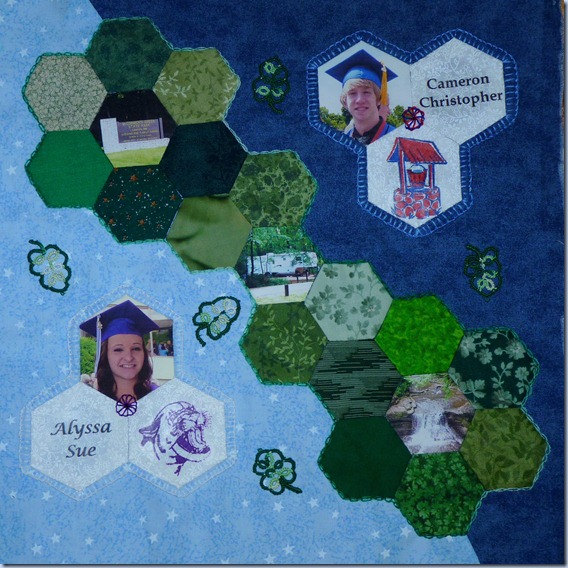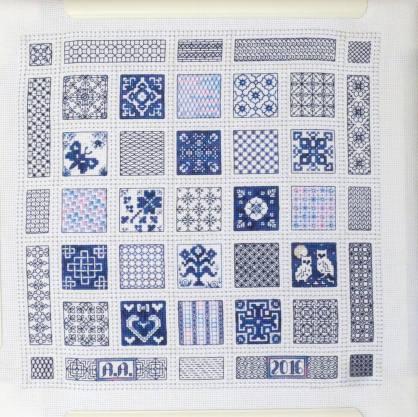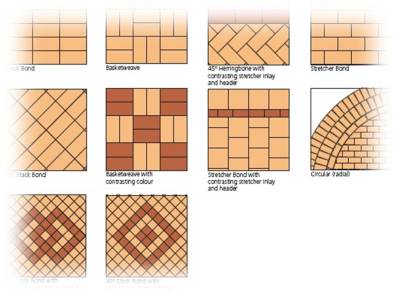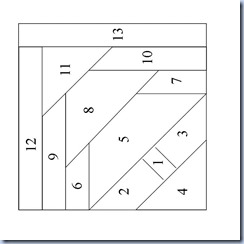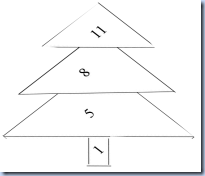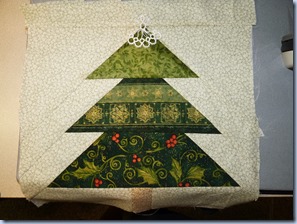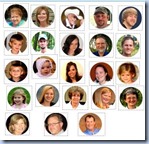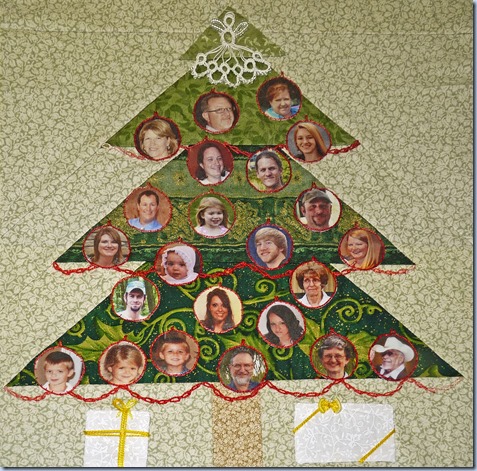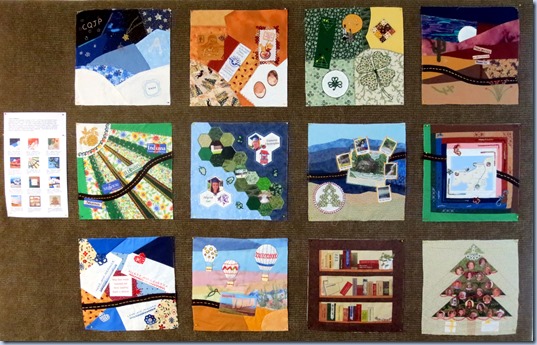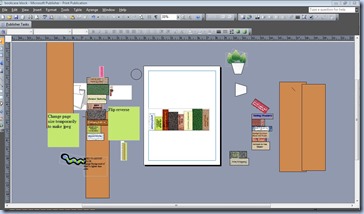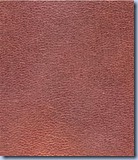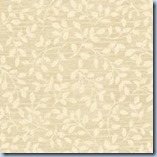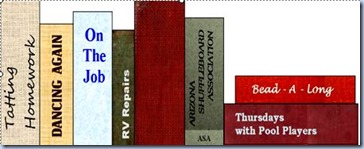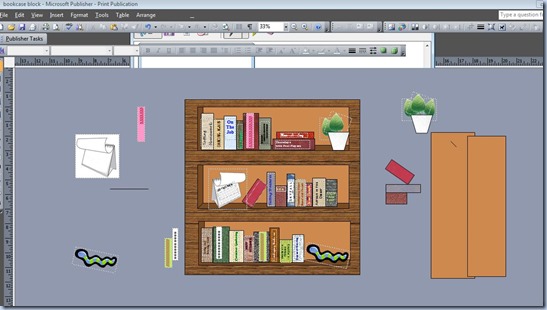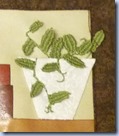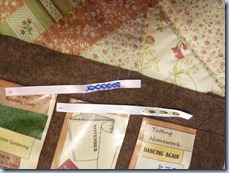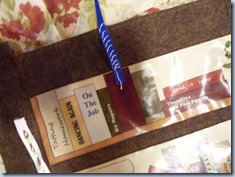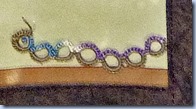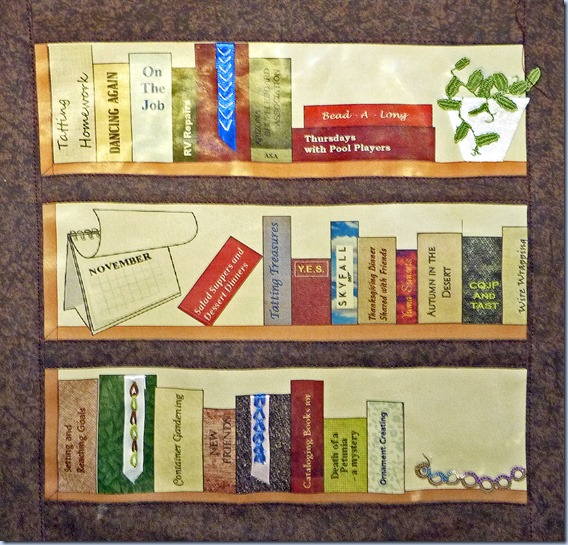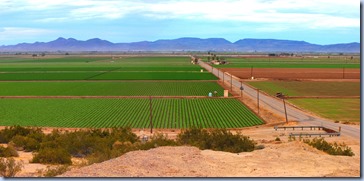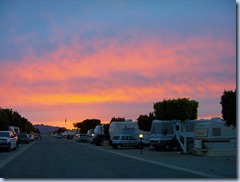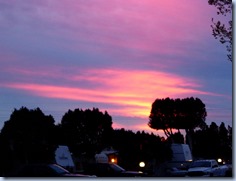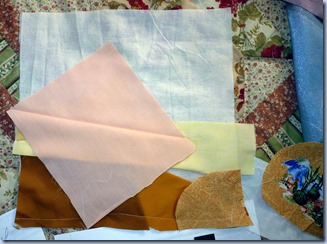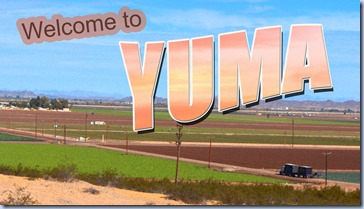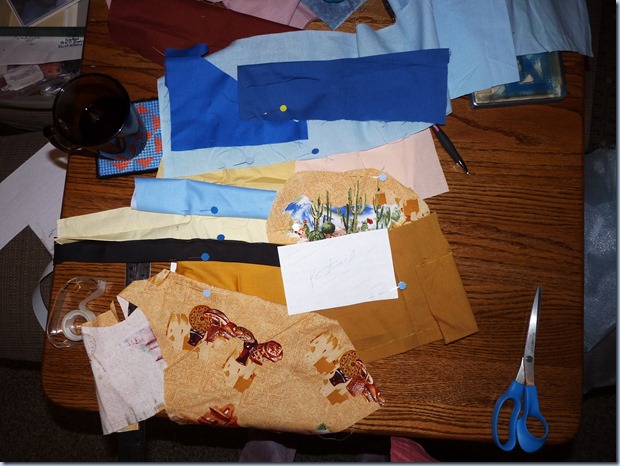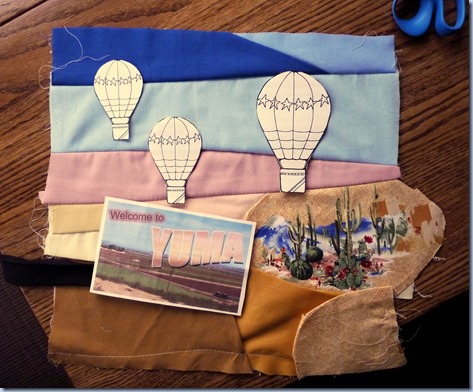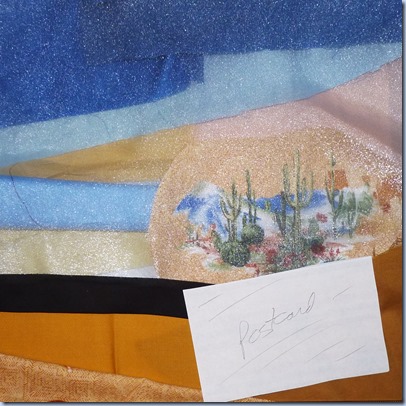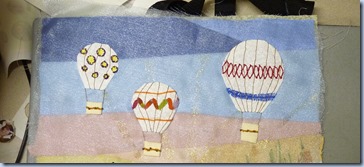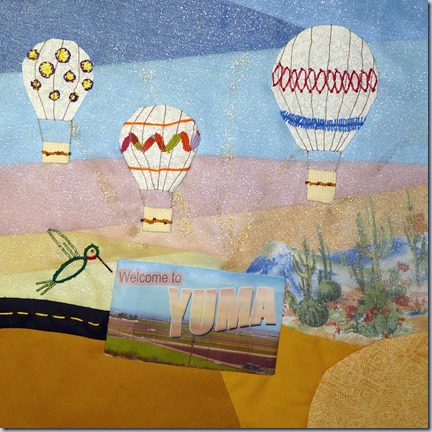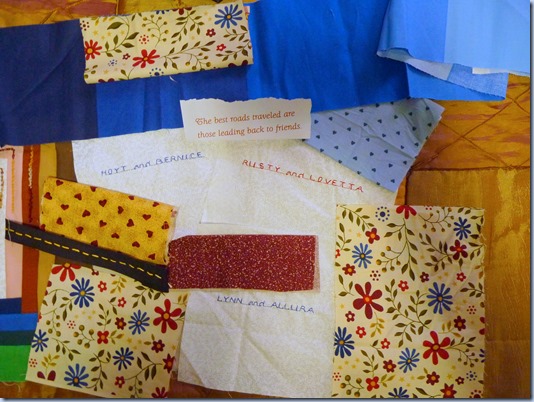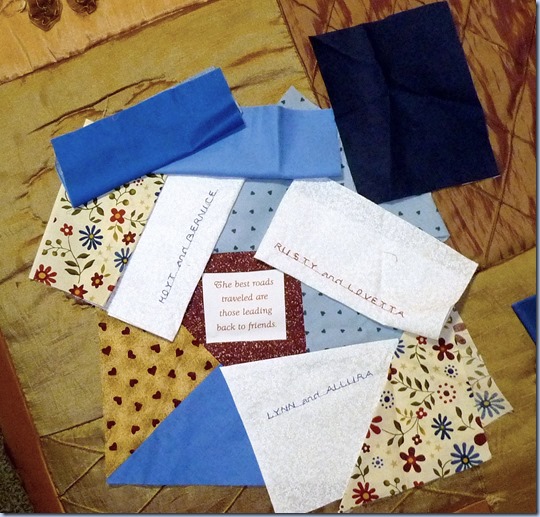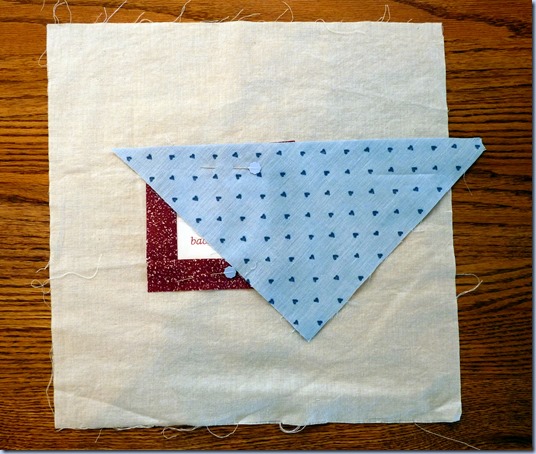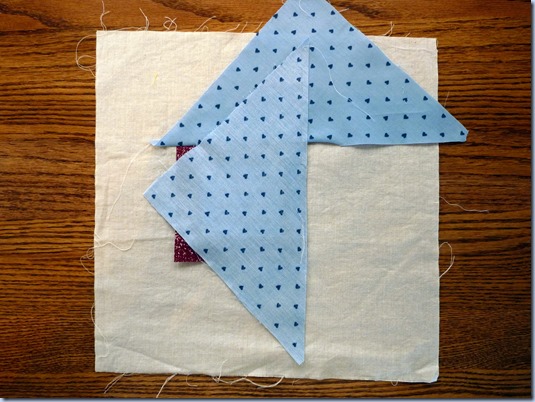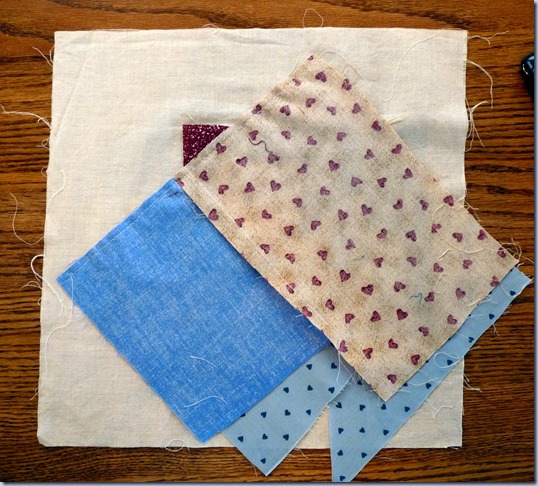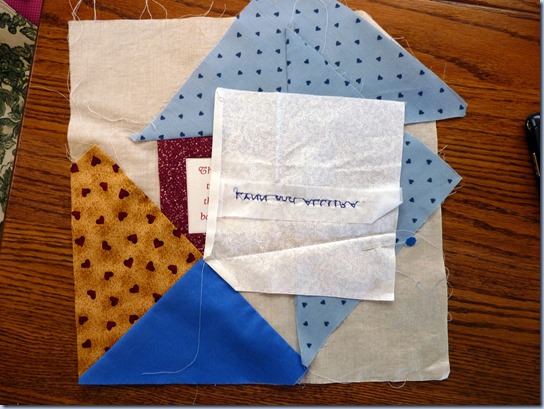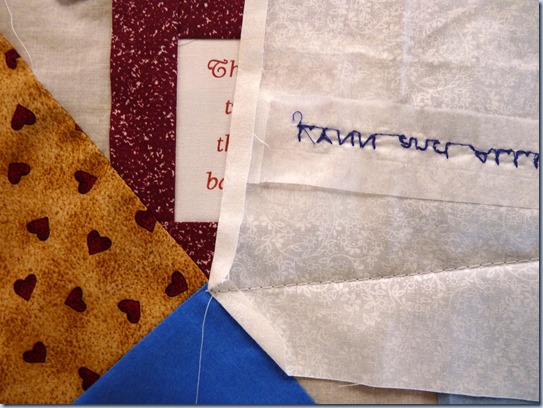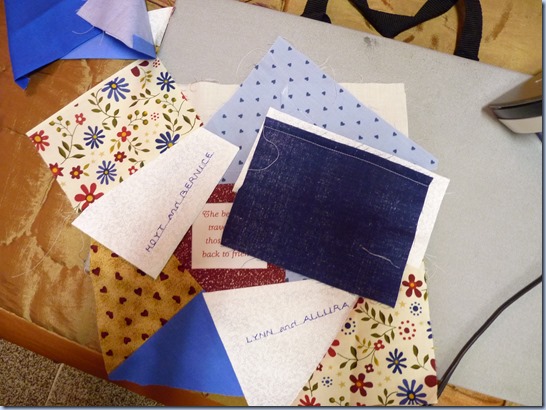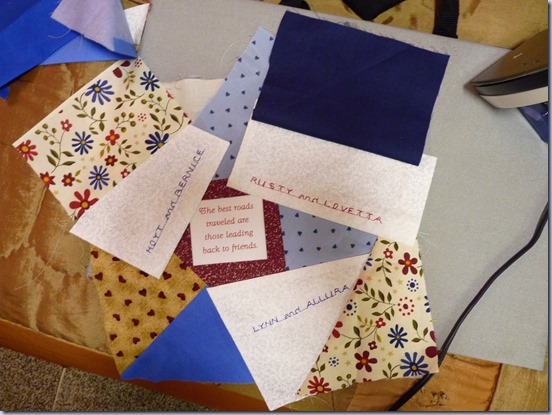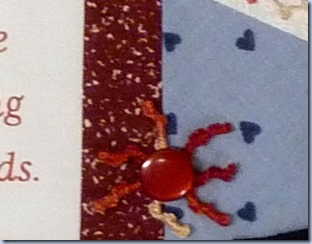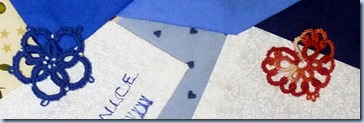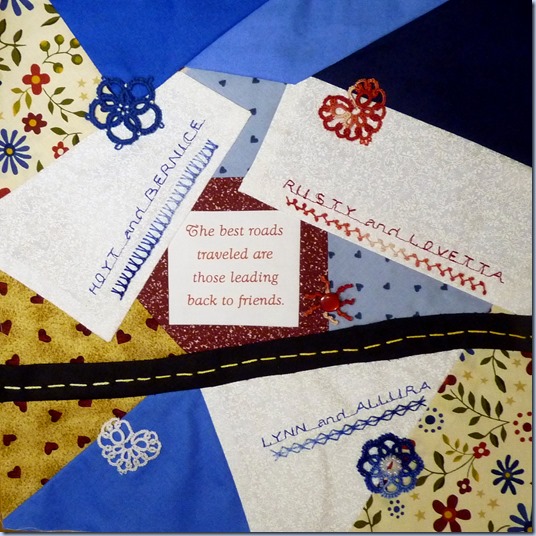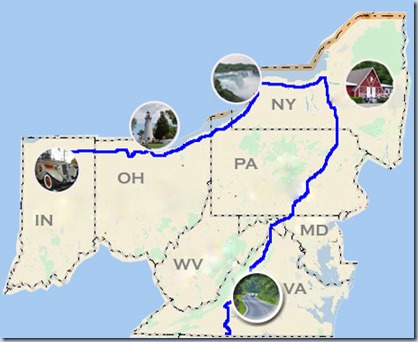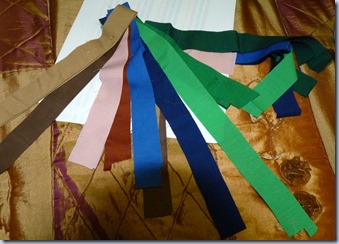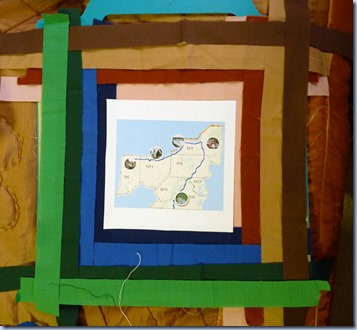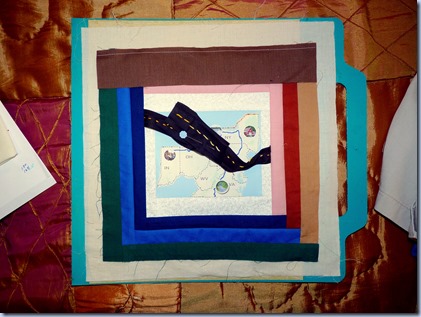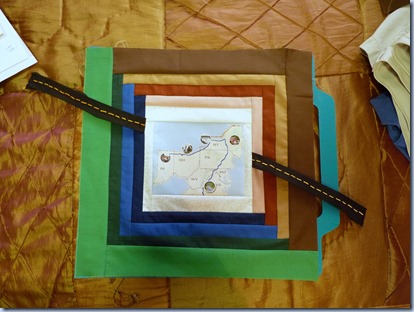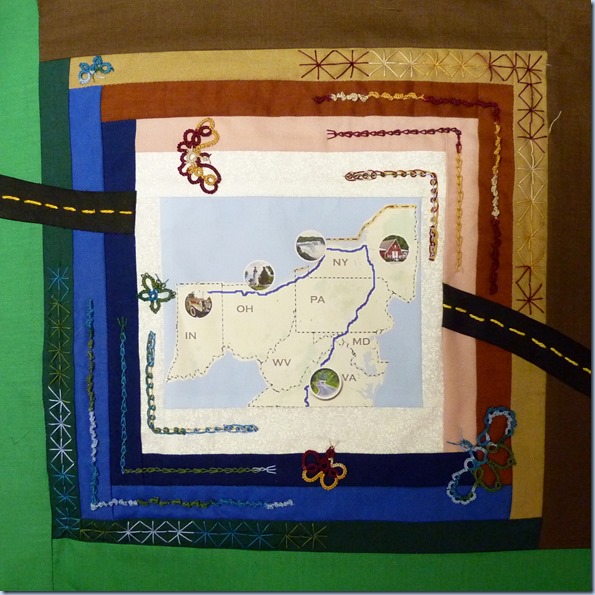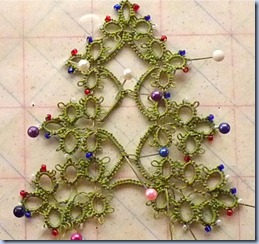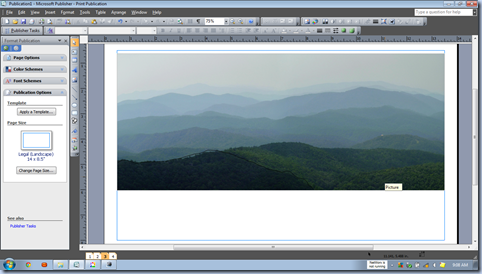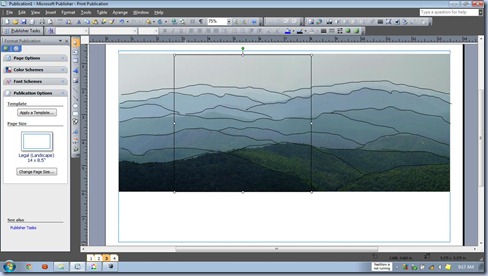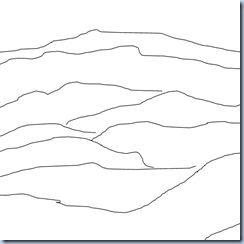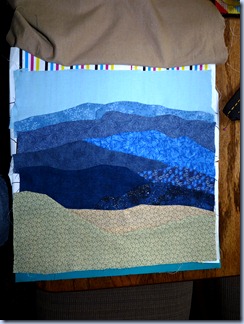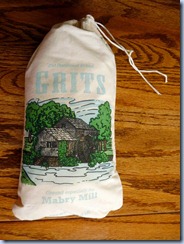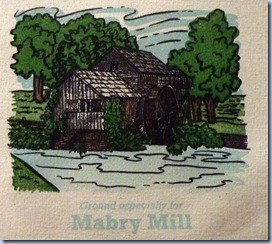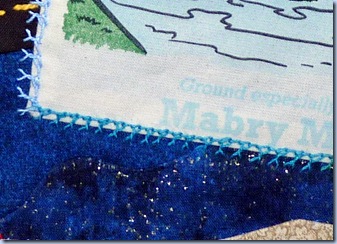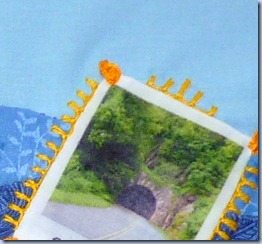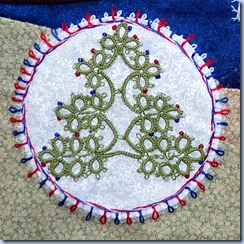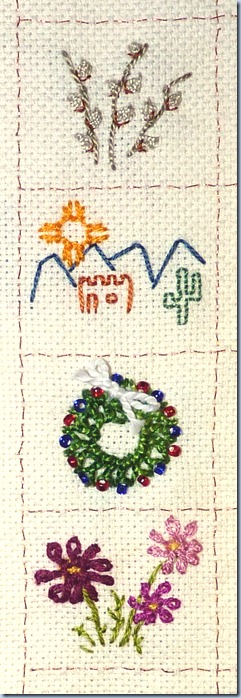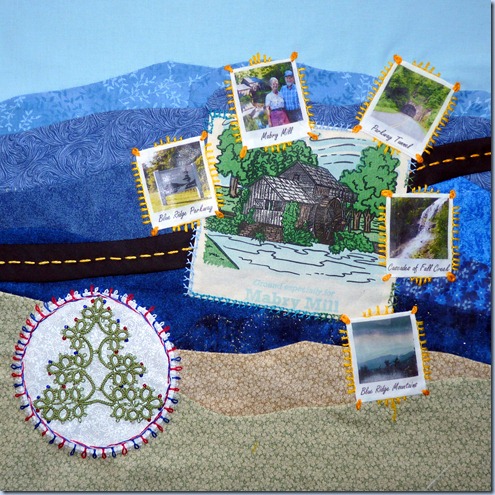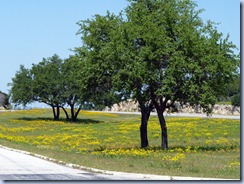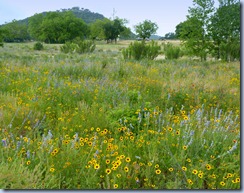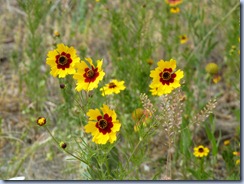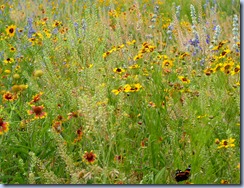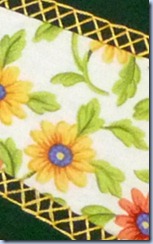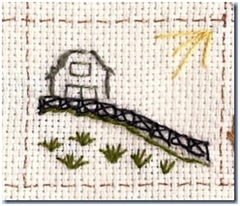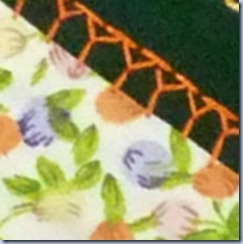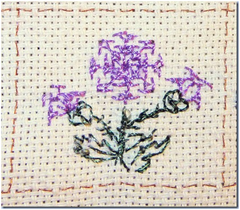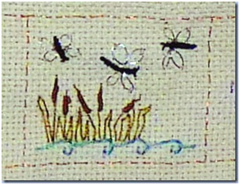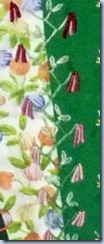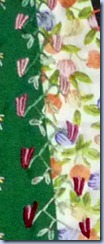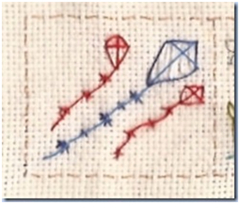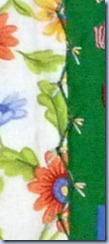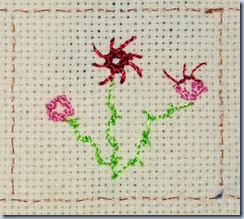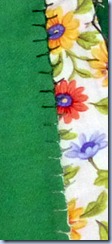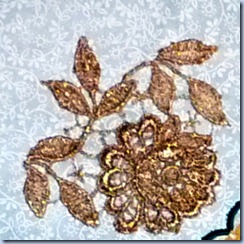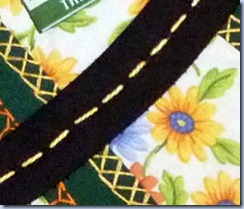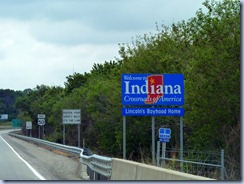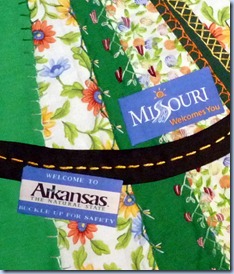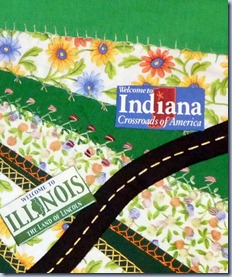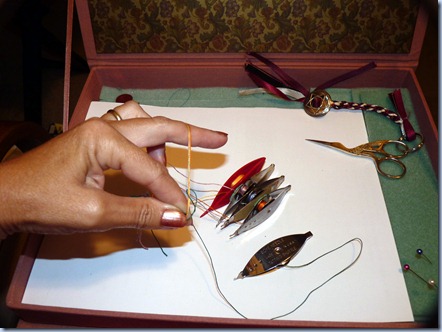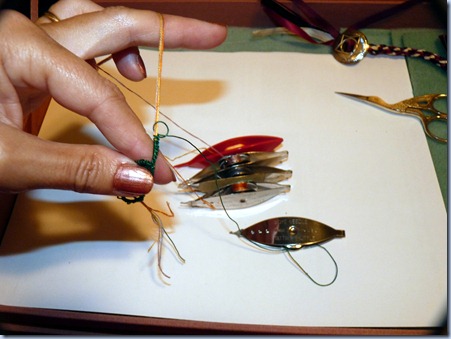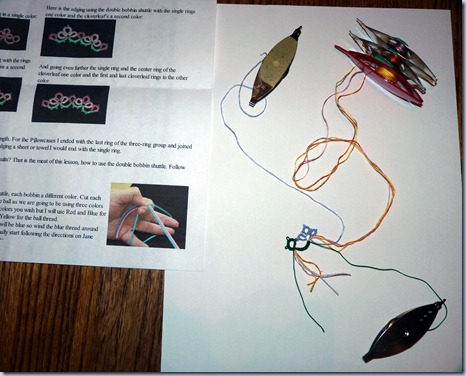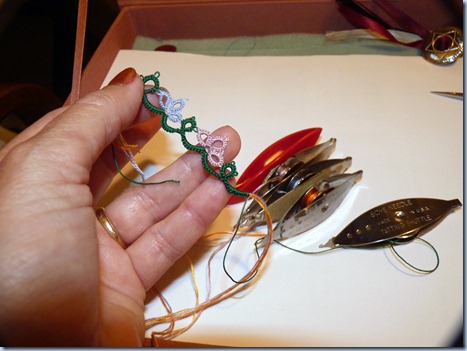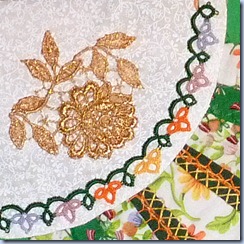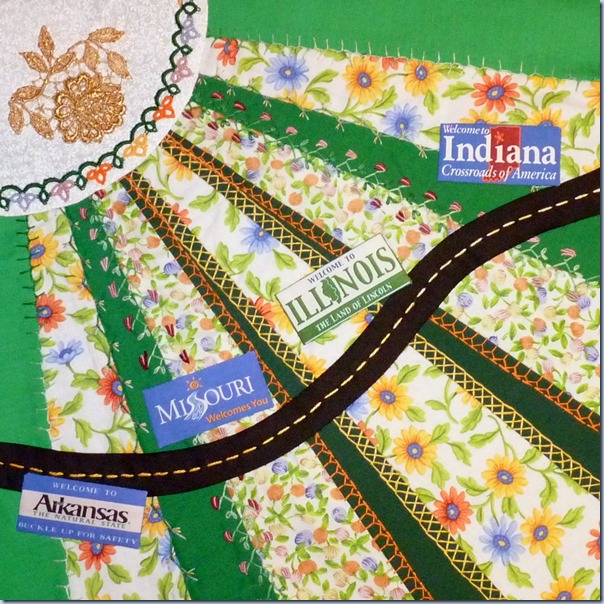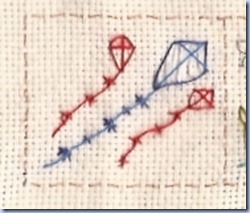I’ve slipped rather far behind with both the Take A Stitch Tuesday (TAST and Crazy Quilt Journal Project (CQJP) during June and July. See blog posting just prior to this one to see why I fell behind.
We spent the month of June at McCormick’s Creek State Park in Indiana, volunteering as camphosts (a position we’ve had for the past 5 years). We also had two major family events in June. A granddaughter and a grandson both graduated from high school.
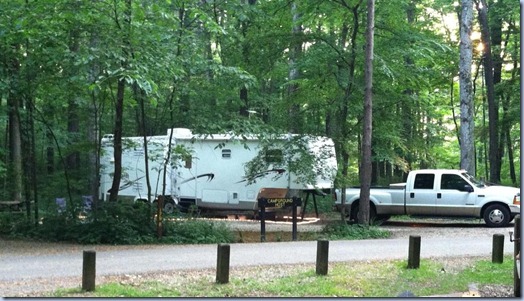
This is a rather lengthy explanation of how I made this month’s block. If you have come just to see a photo of the completed block, it’s at the very end of this post. If you would like to read about the evolution of the block, read on.
I wanted to commemorate both our stay and the graduations in my crazy quilt block. I finally decided to divide the block into two halves, one for each graduation and somehow have the park running between the two. It seemed logical to base the park portion on green tree colors, as our campsite is surrounded by trees.
I also wanted to incorporate Alyssa’s school colors, white and purple, and Cameron’s of blue and red, along with their photos, if possible. The question was how to make them all come together? I finally decided to create a green, leafy mosaic running diagonally down the block and blue on each side.
At that point, hexagons seemed to provide an answer. I could print the kids’ photo, name, and school symbol each on hexagons. Then I would make the park mosaic from hexagons slightly smaller. I would include some park photos as well.
The hardest part of each block for me is always deciding on the design. Once I’ve decided, then I really enjoy laying the block out, perhaps even more than its construction.
I used MSPublisher to lay out the block. I’ve used this program a lot over the years as a quilt design tool. I found that my 12 1/2” block would hold 18 hexagons in the diagonal part. The three park photos would be centered.
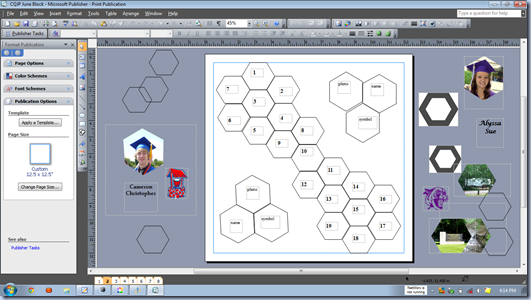
I had often thought of trying English paper piecing. This seemed like a good time to try it on a smaller scale than most projects. I could not get the templates for the hexagons sized precisely enough with Publisher, so I switched to Adobe Photoshop Elements to help there. Once I had the two exact size hexagons, I duplicated them, and printed them on cardstock. I also used Photoshop Elements to crop the photos into hexagon shapes.
If you need more information on English paper piecing, you will find a detailed tutorial with explanatory photos at this site: Hexagon Paper Pieced Tutorial by Janet M. Davies.
I used Tailor Sew-In Colorfast Sheets to print the photos onto cloth. For the names and school icons, I used Tailor Print-N-Press Transfer Sheets to print them on my white on white fabric (the one fabric common to all my blocks.
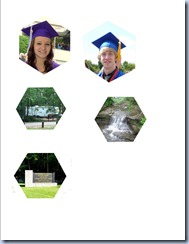
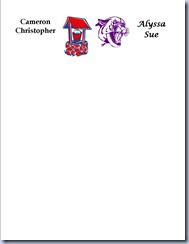
I basted all the individual hexagons to the cardstock forms, then played with the ones for the center until I had them laid out in a pleasing pattern. Once I saw how I wanted them, I turned them over and numbered the hexagons to correspond with my pattern numbers. Numbers 3, 10 and 15 would be my park photos. Then I just pieced them together by number.
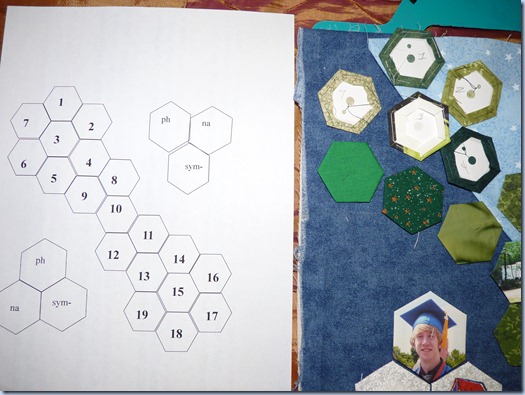
I found a denim look fabric swath to use on Cameron’s side of the block, and a pastel star printed blue for Alyssa’s. These were basted down to the muslin block base. Pictured to the right of it is the completed green mosaic and those for the graduations.
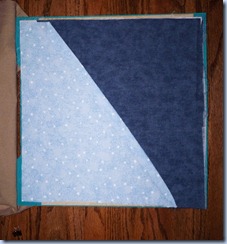
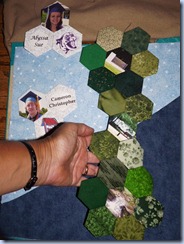
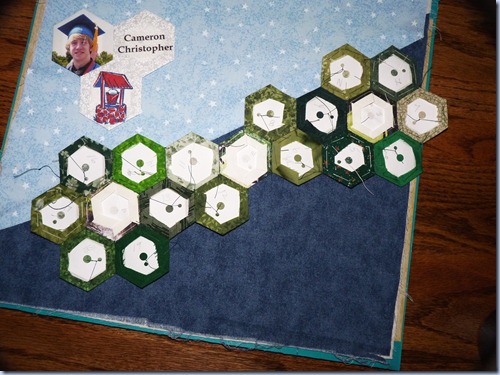
After pressing, I removed the cardstock forms. Before sewing the fabric to the cardstock, I had punched two holes in each form. I used these holes for the first stitch as I basted the hexagons to the forms. This was the only stitch that penetrated the cardstock, so now it was a simple task to cut that stitch, and remove the forms by flipping them out with the closed scissors inserted through the larger hole.
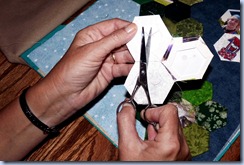
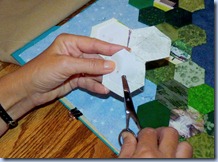
I blindstitched the green mosaic to the block, but before adding the graduation mosaics, I wanted to embroider them with the first TAST stitch of the month, Buttonhole Wheel. I used it to embellish the center of each three hexagons. Cameron’s presented a bit of a challenge as I wanted to use both red and blue. I threaded two needles with the colors, and alternated the stitches, simultaneously creating a two buttonhole wheels with the same center.
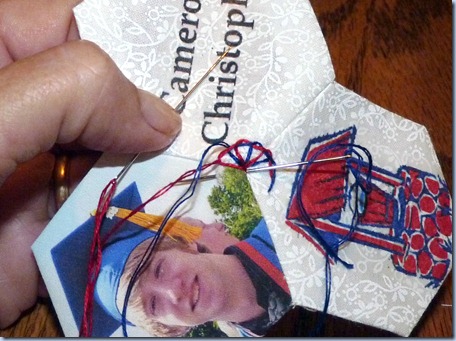
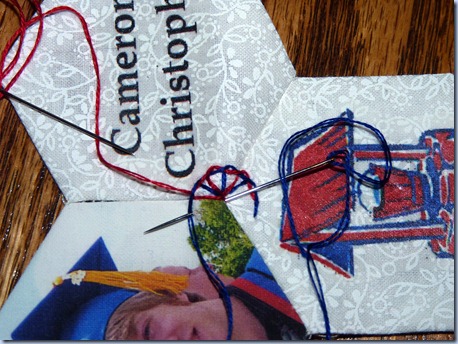
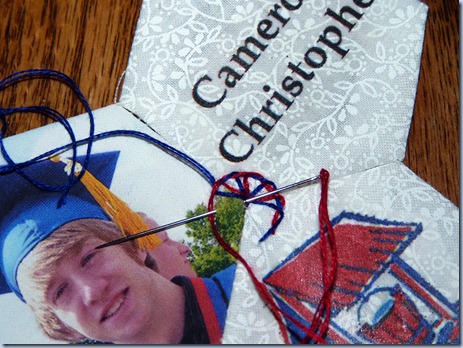
Now I attached the graduation mosaics to each side.
I also stitch a square to my TAST sampler with each new stitch. I created hollyhocks with the Buttonhole Wheel, one of my favorite flowers from the past. Growing up in rural Indiana, every yard had hollyhocks growing, usually around the sides of the outhouse. 🙂 I’m not sure, unless it was just the ladies way of adding a little color and beauty to every corner. I snapped this photo at the George Rogers Clark National Memorial in Vincennes, IN a few years ago.
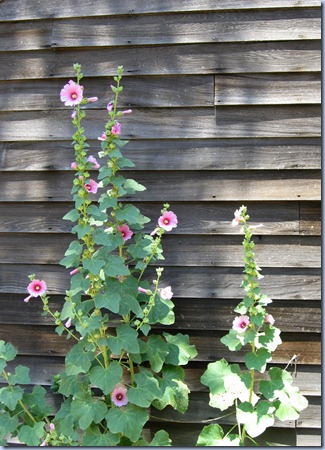 These are my hollyhocks for the sampler:
These are my hollyhocks for the sampler:
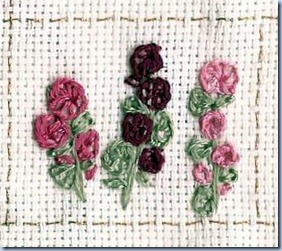
Back to the quilt block. The second stitch of the month was the Cable Chain Stitch. I used a variegated green floss to add the stitch around the perimeter of the center mosaic.
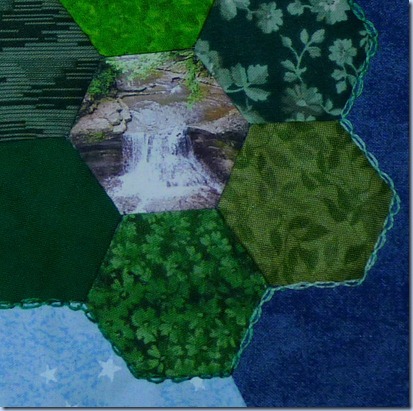
I liked this stitch, and as I added it to the block, I was reminded of a string of beads. From there, it was easy to decide how to add it to my nature themed TAST sampler.
As a child, my mother told me of a “bead plant” that she had grown as a young adult. She said it produced beads that you could string together and that they would last forever. She thought the name was “Job’s Tears”. For years, I searched for the seed, and finally a good friend discovered some at a seed exchange. Keep in mind, this was a long time before we were all internet users…today it is a simple matter to locate and purchase the seeds.
The plants grew easily in Indiana, looking like fragile cornstalks. Seeds formed on the top in clusters, and soon dried and hardened on the plant, in varying shades of gray and black. (I’ve taken the following images from the internet, as I don’t have a pictures of the ones I grew.)
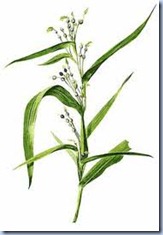
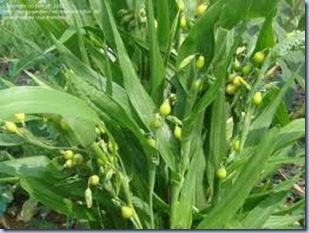
As the seed grew dry enough, you could easily detach them from the vine. There was a little tuft of growth in one end that easily pulled out, leaving a clean hole through the center. They truly were beads!
They were pretty in their natural state, but I also sprayed some of them with clear polyurethane when I wanted shiny beads.
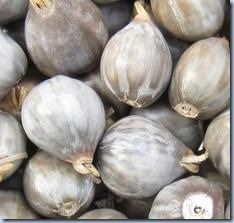
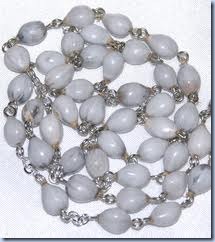
But I tend to digress. Here is my Job’s Tears from the Cable Chain Stitch, including a “necklace” border.
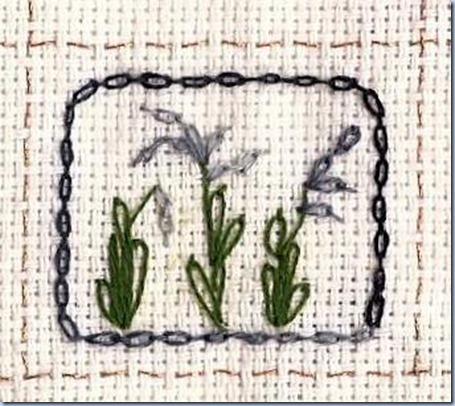
Usually there are 4 new stitches each month, but June included a “catch-up” week, so the third and last stitch of the month was the Palestrina Stitch. I found this a hard stitch to master, but finally was able to stitch it rather fluidly. I love the way it adapts itself to corners and turns.
For the block, I used it to create a border around the graduation mosaics.
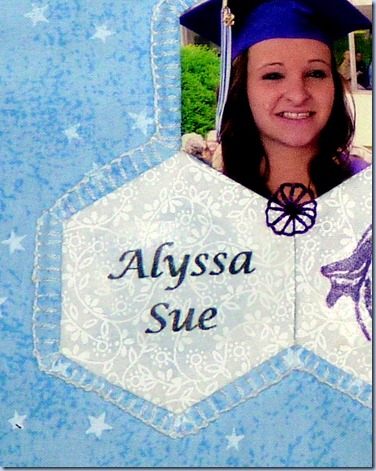
With the ability to curve the stitch line and to vary the length of the “arms” of the stitch made it an ideal stitch to create woodland ferns, another of my favorite plants. It also fascinates me how a fern can grow seemingly out of the rocks. The first photo was taken at McCormick’s. The second near our site this morning. We are currently camping near the Appalachian Mountains, and the woods are full of ferns.
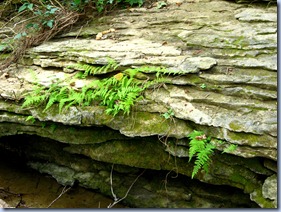
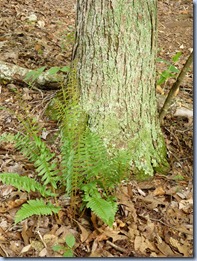
This is my fern from the Palestrina Stitch.
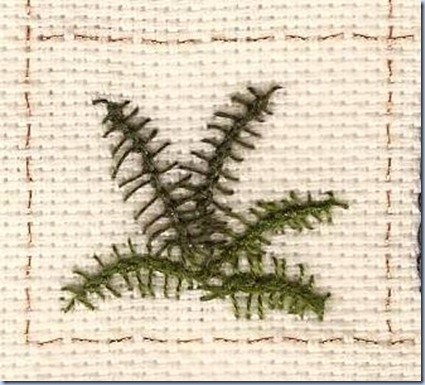
All that was left was to add some tatting to the block. Leaves from the pattern, La Feuille Frivole, by J Paulson was the perfect link to tie the center of the blocks with the side. I tatted 5 and scattered them on the block.
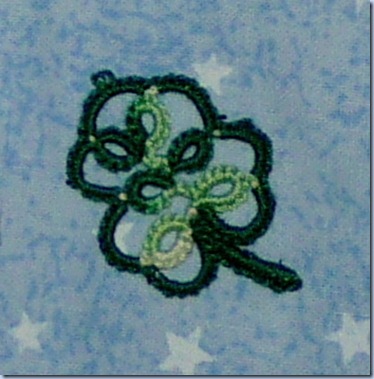
And here’s the June completed block “Hosting and Celebrating Family”.
